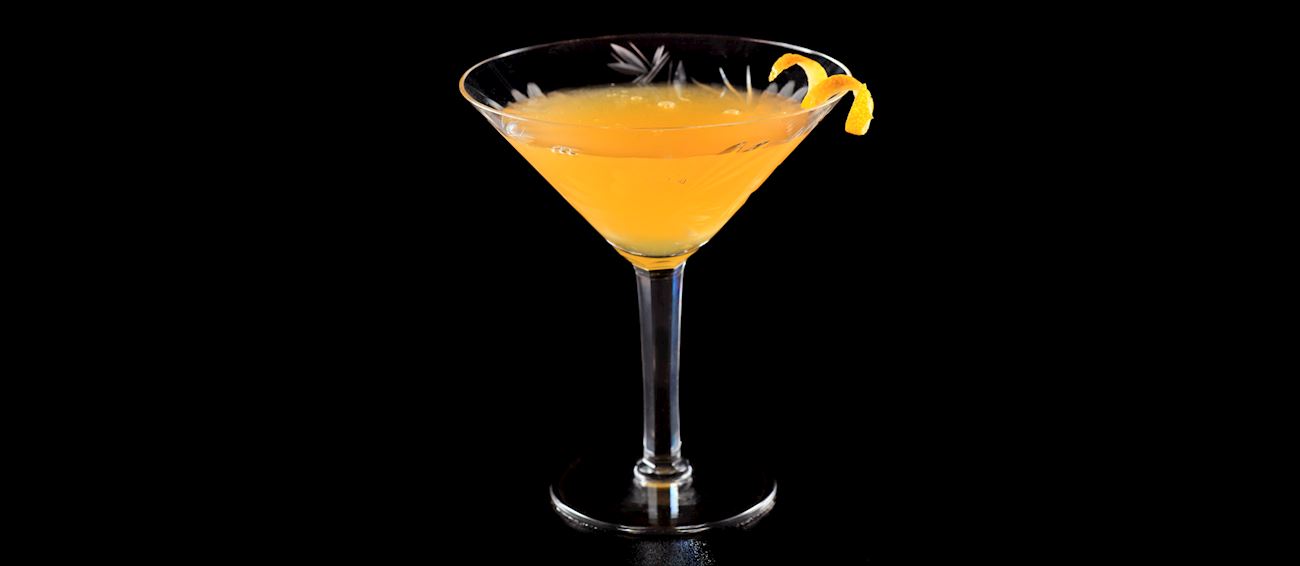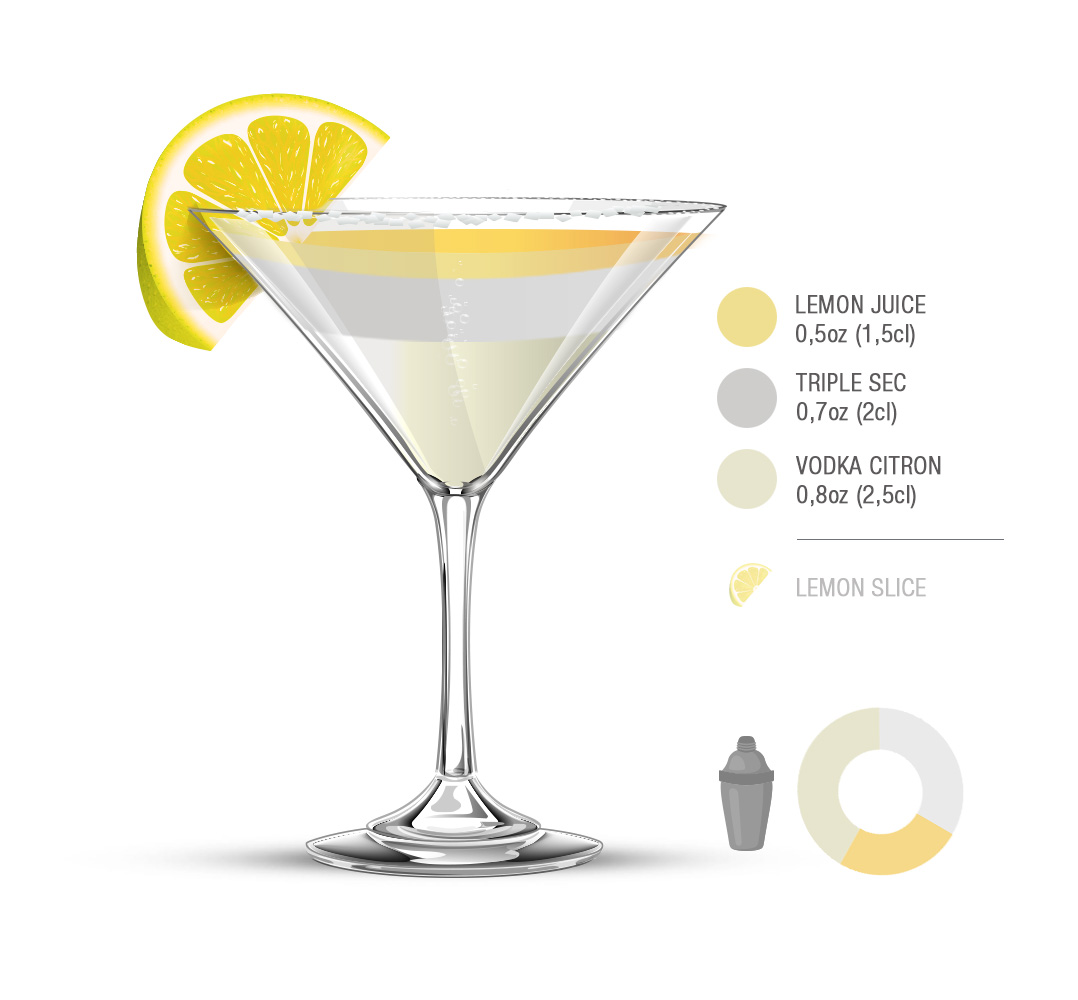TABLE OF CONTENTS
Best San Francisco Cocktail Types
MAIN INGREDIENTS
This refreshing cocktail is made with a combination of vodka (preferably of the Citron variety), triple sec, and freshly squeezed lemon juice. To prepare Lemon Drop Martini, all ingredients are shaken and strained into a chilled cocktail glass.
The glass should be rimmed with sugar and garnished with a lemon slice. It is believed that the cocktail was invented in the 1970s by Norman Jay Hobday in San Francisco. Originally, it consisted only of vodka, sugar, and lemon juice, and it was inspired by the lemon drop candy.
MAIN INGREDIENTS
This Prohibition-era cocktail is made with a combination of gin, lemon juice, and honey. In order to prepare it, all ingredients should be shaken with ice, then strained into a cocktail glass. The cocktail is typically garnished with a lemon peel.
The name Bees Knees is a Prohibition-era slang, meaning the best. Originally, the drink was prepared with lemon and honey in order to mask the unpleasant smell of bathtub gin. The first written recipe can be traced back to 1930 in San Francisco, where it appeared in bartender Bill Boothby’s compendium called World Drinks and How to Mix Them.
MAIN INGREDIENTS
Pisco Punch is an American cocktail that first started its way to fame in San Francisco in the late 19th century. It is made with a combination of Pisco, pineapple gum syrup, lemon juice, and distilled water. There is also a secret ingredient which has been lost due to the passing of time, although it's quite possibly Vin Mariani (cocaine-infused wine which is nowadays made with the addition of decocainized coca leaves).
The ingredients are shaken with ice, then strained into a cocktail glass garnished with pineapple wedges. It is believed that Pisco Punch was invented in San Francisco's Bank Exchange, and there are a few people credited with its invention: John Torrence, one of the early owners of the bar; Duncan Nicol, the bar's last owner, or Professor Jerry Burns, also of the Bank Exchange.
MAIN INGREDIENTS
Cable Car is a modern cocktail invented in 1996 in San Francisco by Tony Abou-Ganim. Although the recipes can vary, it is typically prepared with a combination of spiced rum, orange liqueur, lemon juice, and sugar syrup. In order to prepare it, all ingredients should be shaken with ice, then strained into a chilled cocktail glass.
If desired, the rim of the glass can be garnished with sugar and cinnamon.
MAIN INGREDIENTS
Tommy’s Margarita is a cocktail made with a combination of tequila, lime juice, and agave nectar. In order to prepare it, all ingredients should simply be shaken, then strained into a chilled cocktail glass. The cocktail was invented in the 1990s by Julio Bermejo at his family’s Mexican restaurant and bar in San Francisco, called Tommy’s, hence the name.
In the restaurant, Tommy’s Margarita is traditionally served with tortillas and salsa on the side.
MAIN INGREDIENTS
Gibson is a cocktail made with a combination of gin and dry vermouth. In order to prepare it, the ingredients should be shaken with ice, then strained into a chilled martini glass, which is garnished with a pickled cocktail onion. It is believed that Gibson was invented in San Francisco in the late 1800s by a businessman named Walter D.K. Gibson, hence the name of the cocktail.
Gibson thought that consuming onions prevented common colds, and that is the reason why the mini allium is in the drink instead of a briny olive. The most notable reference to Gibson in pop culture can be seen in Alfred Hitchcock’s North by Northwest, when Cary Grant orders it on a train while having dinner with Eva Marie Saint.
MAIN INGREDIENTS
Black Manhattan is an amaro-based version of the legendary Manhattan cocktail. The drink is made with rye, Averna (bitter Italian amaro), orange bitters, and Angostura bitters. To make the drink, all the ingredients are stirred with ice, and the cocktail is then strained into a chilled cocktail glass.
This Manhattan variation was created in 2005 by Todd Smith, a mixologist at the Bourbon & Branch in San Francisco. The cocktail is now considered a modern classic. Black Manhattan is served in a coupe glass garnished with a cherry.
MAIN INGREDIENTS
Classic Frisco cocktail is an old American cocktail that combines bourbon and Bénédictine—French herbal liqueur. The original recipes did not specify the type of whisky, but in the 1940s, bourbon became a more prominent choice.
Contemporary recipes often suggest rye as the preferred option, and most modern variations also include freshly squeezed lemon juice. The drink can be stirred or shaken, and it is usually served in a coupe glass and garnished with a lemon twist. Not much is known about its history, but the first written mention is often accredited to William Boothby in his World Drinks and How to Mix Them, published in 1934.
MAIN INGREDIENTS
Revolver is often dubbed as a Manhattan with a caffeine kick. It was created by San Francisco mixologist John Santer, sometimes in the early 2000s. The cocktail combines bourbon, coffee liqueur, and a dash of orange bitters. To make the cocktail, the ingredients are mixed in a mixing glass filled with ice.
When chilled, the mix is strained into a coupe glass. A flamed orange peel is used as a garnish. Originally, this cocktail was made with Bulleit Bourbon, a Kentucky with a high rye content. Although contemporary variations suggest other bourbons, it is recommended to stick to Santer's original suggestion.
MAIN INGREDIENTS
Añogo is a creamy cocktail that is often described as eggnog with a twist. It combines tequila and amontillado sherry with an eggnog base or a creamy liqueur such as Advocaat. The cocktail is made by adding all the elements into a glass filled with ice.
The ingredients are then stirred until well chilled. In the original version, the base for the cocktail is made by beating egg yolks with sugar, milk, and heavy cream and then incorporating separately beaten egg whites. Añogo was created by H.
TasteAtlas food rankings are based on the ratings of the TasteAtlas audience, with a series of mechanisms that recognize real users and that ignore bot, nationalist or local patriotic ratings, and give additional value to the ratings of users that the system recognizes as knowledgeable. TasteAtlas Rankings should not be seen as the final global conclusion about food. Their purpose is to promote excellent local foods, instill pride in traditional dishes, and arouse curiosity about dishes you haven’t tried.








